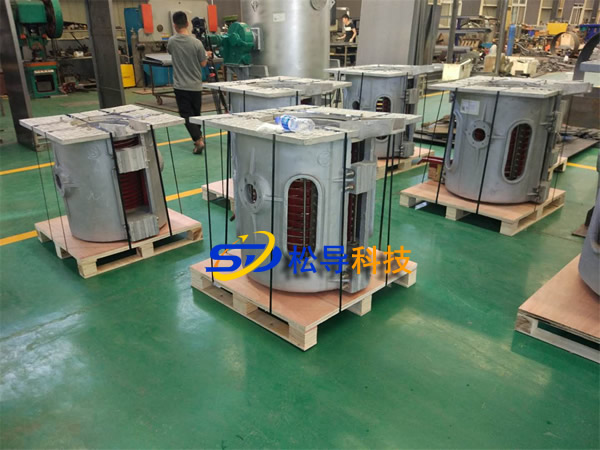What is the cause of overcurrent protection when induction furnaces work?
It is generally caused by the lining being too thin. After the lining is thinned, the equivalent impedance is reduced, and the power cabinet will be operated with a limited current. For a normal smelting system, the current limiting operation occurs at the beginning of the smelting and the metal in the furnace is almost full, and the current limiting operation time is generally It accounts for about 50% of the total melting time. If the equivalent impedance of the electric furnace is too small, the output voltage is relatively low when the current is limited. The current regulator on the main board cannot work very stably. If there is disturbance (such as feeding), the output current will fluctuate more than Protect the upper limit, causing overcurrent protection. Under normal circumstances, the thickness of the lining can be judged by weighing the weight of each furnace. For the melting furnace of the KGPS series power cabinet, if the molten metal of a furnace is greater than 1.3 times its rated capacity, the lining should be replaced.
Inverter thyristor water-cooled jacket has a reduced water or heat dissipation effect - replace the water-cooled jacket. Sometimes it is sufficient to observe the water output and pressure of the water jacket, but often due to water quality problems, a layer of scale is attached to the wall of the water jacket, because scale is a very poor thermal conductivity, although there is sufficient water flow. However, because the scale is isolated, its heat dissipation effect is greatly reduced. The method of judging is: running the power at a power lower than the overcurrent value for about ten minutes, stopping quickly, and quickly touching the core of the thyristor component by hand after stopping, if the hand feels hot, the fault is caused by Caused by this.

Poor connection and disconnection of the connecting line of the tank road - check the connecting line of the tank road, and handle it as appropriate according to the actual situation. When the connection line of the tank circuit has poor contact or disconnection, the fire will rise after a certain value rises, which will affect the normal operation of the equipment and cause the equipment to protect. Sometimes a transient overvoltage occurs across the thyristor due to a fire. If the overvoltage protection action is too late, the thyristor component will burn out. This phenomenon often occurs when overvoltage and overcurrent occur simultaneously.















